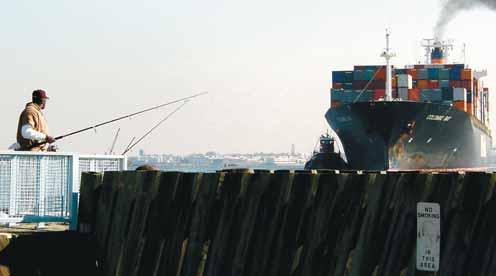
1 minute read
Go Fish
By Dr. Jack A. Mills, Jr.
»MY FIRST recollection of fi shing was digging. After about an hour or two, my father and I might be lucky enough to fi nd 75 to 100 worms. Th en, to the river to fi nd a nice eddy hole with no branches overhead so we could fl ip our lines, hook and sinker, in hopes a fi sh would spot the worm. Th is was in the middle 1930s. Most of the fi shing was from the banks or wading. Th e few boats that were used were moved by paddles or oars. Once in a while you could hear a motor putting up and down. Th ere were fewer gators then, more beaver and deeper channels. In the summers after school was out daddy would take me on an all day trip on the Choctawhatchee down in Florida. We would leave before daylight, get home after dark. And hopefully dress a big mess of fi sh before bedtime. In 1940 my father purchased our fi rst outboard motor, a Johnson 5 HP. In 1944 I made my fi rst overnight fl oat trip from Clayhatchee to Geneva with my long-time friend Joe Watson. We cast artifi cial lures during the day and set hooks at night. We caught fi sh like you wouldn’t believe, at least it seems that way now. I think the fi shing on the river has always been good. It is just as good now, of course it varies as to the capability of the fi sherman. Th e biggest change in fi shing is technology. Better poles, reels and rods, plastic lures. My favorite lures in the 1950s and 1960s were Hawaiian Wigglers, Lucky 13’s, inline spinners (preferably yellow) and, of course, I still fi sh worms and crickets. I’ve found that the very best fi shing times are in spring and fall — fall especially after hunting season begins when there are fewer folks on the river! All in all — the fi sh are still there. It’s up to you to go catch them. So go fi sh the river! W
Michael William Mullen, Choctawhatchee Riverkeeper










